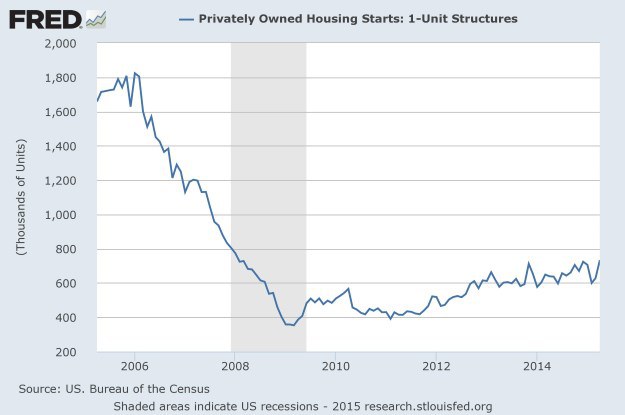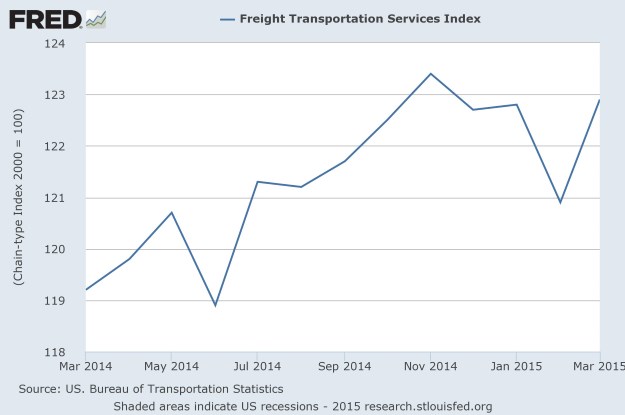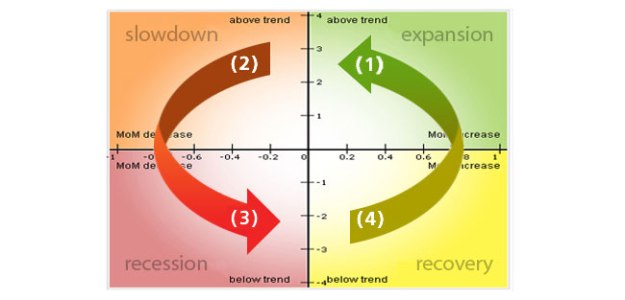Summary: This post looks at the recent economic data, but not to convince you about the rightness of my forecast (more slow growth), but rather to help you make sense of the river of economic data the modern media brings us. As a bonus you’ll learn the secret of the new business cycle. (1st of 2 posts today.)
We get so many confident forecasts about the economy. Some bullish, some bearish, most largely wrong. On the fringes of the investment industry we get people boasting about their insights, with mockery of mainstream economists, and conspiracy theories about the government’s data to explain their failed predictions.
Nor have mainstream economists won much glory. They correctly called the recovery after the strong stimulus programs began in early 2009, but have consistently and wrongly expected “take off” to “normal growth”.
After 6 years with multiple busts of massive government stimulus, the US (and perhaps world) economy lives in crazy town. The numbers bounce around in an ever-changing nonsensical pattern of activity. The textbook business cycle clock is MIA. At the top of the swings the bulls are wrong; at the bottom the bears are wrong. So it’s been this year. Economists expected a strong start with 3% in Q1, we got near-zero (which might get revised to down) — accompanied by the usual wave of bad data.
This month’s numbers have been mixed, but with two kinds of strong results. Good news, like the decent jobs growth. And great but fake news like that the Wall Street Journal (and other news media) reported this week: “U.S. home building surged in April to the highest level since before the recession officially began, a sign of thaw in the housing market during the crucial spring selling season.” It’s an example of why we know little: because we read the news.

As you can see, single family home starts “surged” by reversing their dump in March. April’s starts were almost identical to those in November 2013 and December 2014. The trend is slow growth.
By “highest since the crash” they meant rising to 40% of the pre-crash peak (and roughly half of the rate during the late 1998-2002 period). Including multi-unit homes gives the same picture.
Freight activity indexes
Instead of looking at the various sector indicators, let’s look at something more central. Nothing is more central than transportation, with multiple measures giving hard data in relatively real time. We cannot have accelerating growth without something moving fast — raw materials, imports, exports — something. The indexes draw a mixed picture, consistent with the rest of our messy data.
From the Department of Transportation we get the seasonally adjusted Freight Transportation Services Index, measuring the volume of freight carried in the US. In March it was 0.4% below its peak in November and up 3.1% YoY. That’s consistent with GDP and most other data.
For more current but narrower data we turn to the American Trucking Associations we get the seasonally adjusted Index measures tonnage carried by trucks in the US. The index peaked at 135.8 in January 2015. In April the index fell 3% to a 12 month low of 128.6 (2000=100), down 5.3% from January and up 1.0% YoY. Bad news from a volatile metric.
Conclusion
I often wonder what laypeople get by reading the financial news. It’s presented as a kaleidoscope, bewildering in its abundance, usually devoid of useful context, largely a scaffolding on which analysts and journalists hang their narrative (which often contradicts the data). What do people get my reading this daily flow of factoids?
In a sense it’s always been so, but the strong cyclical aspect of the economy — the business clock — kept people’s narratives somewhat synchronized with reality. Six years of erratic slow growth sustained by bursts of government stimulus have allowed both bulls and bears free reign of their imaginations. Government stimulus plus weak growth means imminent depression, if not collapse of the dollar and perhaps civilization. Or the successful stimulus programs laid the foundation for years of powerful economic growth.
Perhaps both sides have become exhausted. With stock market valuations at nosebleed levels and gold far below its peak, the bears are either endangered or no longer bet their beliefs. The slow steady decline of economists’ long-term growth expectations (e.g., of the Fed Open Market Committee) show the bulls enthusiasm has faded as well.
What’s the secret of the new business cycle? The secret is that there is no business cycle here, just a long chaotic transitional period that began on Y2K (the real significance of that date). I believe the erratic nature of the economic data is the tell. We should be watching the data not to predict the next tick (always difficult, now impossible) but to see the emerging new economic regime when it emerges. Until then almost anything can happen. Perhaps good. Perhaps bad.


